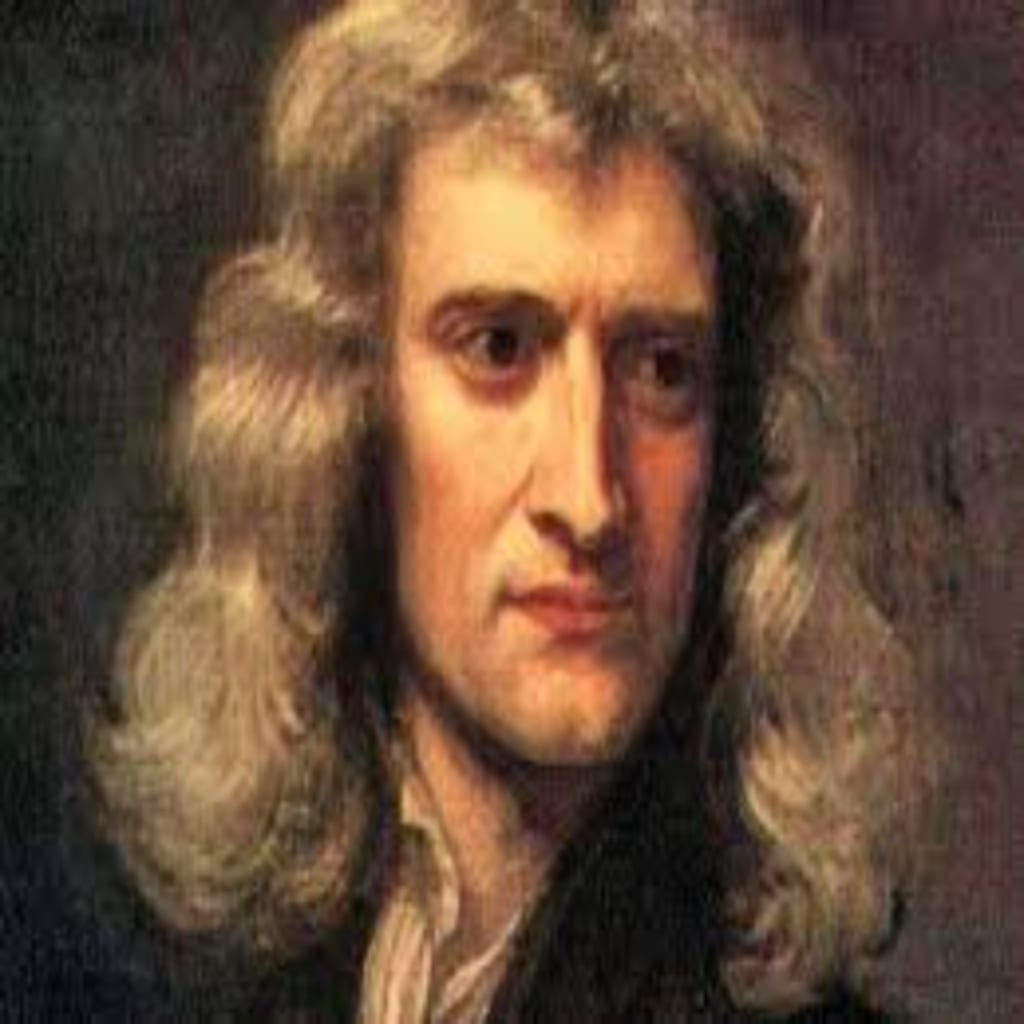Success story of Isaac Newton
The real legend

I. Introduction
Sir Isaac Newton (1642-1727) was an English mathematician, physicist, and astronomer who is widely regarded as one of the most influential scientists of all time. He is best known for his laws of motion, which form the foundation of classical mechanics, as well as his work on optics, the color spectrum, and universal gravitation.
II. Newton's Laws of Motion
Newton's three laws of motion are as follows:
An object at rest will remain at rest, and an object in motion will continue to move at a constant velocity, unless acted upon by a net external force.
The acceleration of an object is directly proportional to the net force acting on the object and inversely proportional to its mass.
For every action, there is an equal and opposite reaction.
These laws helped to explain the behavior of objects under the influence of forces and laid the foundation for the study of dynamics.
III. Optics and the Color Spectrum
Newton conducted a series of experiments with prisms, which led to his discovery of the color spectrum. He observed that when white light passes through a prism, it is separated into its component colors, such as red, orange, yellow, green, blue, indigo, and violet. He also observed that these colors could be recombined to form white light. This discovery had a major impact on the understanding of light and color, and established the foundation of modern optics.
IV. Universal Gravitation
Newton's law of universal gravitation states that every point mass in the universe attracts every other point mass with a force that is proportional to the product of their masses and inversely proportional to the square of the distance between them. This law explained the motion of celestial bodies, such as planets and moons, and provided a unifying principle for understanding the behavior of objects in the universe.
V. Calculus
Newton developed a branch of mathematics known as calculus, which is concerned with the study of rates of change and accumulation. This branch of mathematics was crucial in understanding physics, and it was used by Newton to develop his laws of motion and law of universal gravitation. Calculus also has many other applications in science, engineering, economics, and other fields.
VI. Conclusion
Sir Isaac Newton's scientific contributions have had a profound and lasting impact on the fields of mathematics, physics, and astronomy. His laws of motion form the foundation of classical mechanics, his work on optics and the color spectrum established the foundation of modern optics, his law of universal gravitation explained the motion of celestial bodies, and his development of calculus has had a major impact on the field of mathematics and many other sciences. His works and theories are still valid and used in many fields today.
Newton was born in Lincolnshire, England and attended Cambridge University, where he studied mathematics and began to develop his early scientific ideas. In 1687, he published his most famous work, "Philosophiæ Naturalis Principia Mathematica" (Mathematical Principles of Natural Philosophy), which presented his laws of motion and law of universal gravitation.
One of Newton's most significant contributions to science was his development of the three laws of motion, which are as follows:
An object at rest will remain at rest, and an object in motion will continue to move at a constant velocity, unless acted upon by a net external force.
The acceleration of an object is directly proportional to the net force acting on the object and inversely proportional to its mass.
For every action, there is an equal and opposite reaction.
These laws helped to explain the behavior of objects under the influence of forces and laid the foundation for the study of dynamics.
In addition to his work on motion, Newton also made significant contributions to the field of optics. He conducted a series of experiments with prisms, which led to his discovery of the color spectrum. He observed that when white light passes through a prism, it is separated into its component colors, such as red, orange, yellow, green, blue, indigo, and violet. He also observed that these colors could be recombined to form white light. This discovery had a major impact on the understanding of light and color and established the foundation of modern optics.
Newton also formulated the law of universal gravitation, which states that every point mass in the universe attracts every other point mass with a force that is proportional to the product of their masses and inversely proportional to the square of the distance between them. This law explained the motion of celestial bodies, such as planets and moons, and provided a unifying principle for understanding the behavior of objects in the universe.
In addition to his scientific achievements, Newton also made significant contributions to mathematics, specifically in the development of calculus. He developed a branch of mathematics known as calculus, which is concerned with the study of rates of change and accumulation. This branch of mathematics was crucial in understanding physics, and it was used by Newton to develop his laws of motion and law of universal gravitation. Calculus also has many other applications in science, engineering, economics, and other fields.
Overall, Sir Isaac Newton's scientific contributions have had a profound and lasting impact on the fields of mathematics, physics, and astronomy. His laws of motion, law of universal gravitation, work on optics, and development of calculus are still considered as the foundation of many fields today, and his ideas and theories still hold true and are used in many fields.






Comments
There are no comments for this story
Be the first to respond and start the conversation.